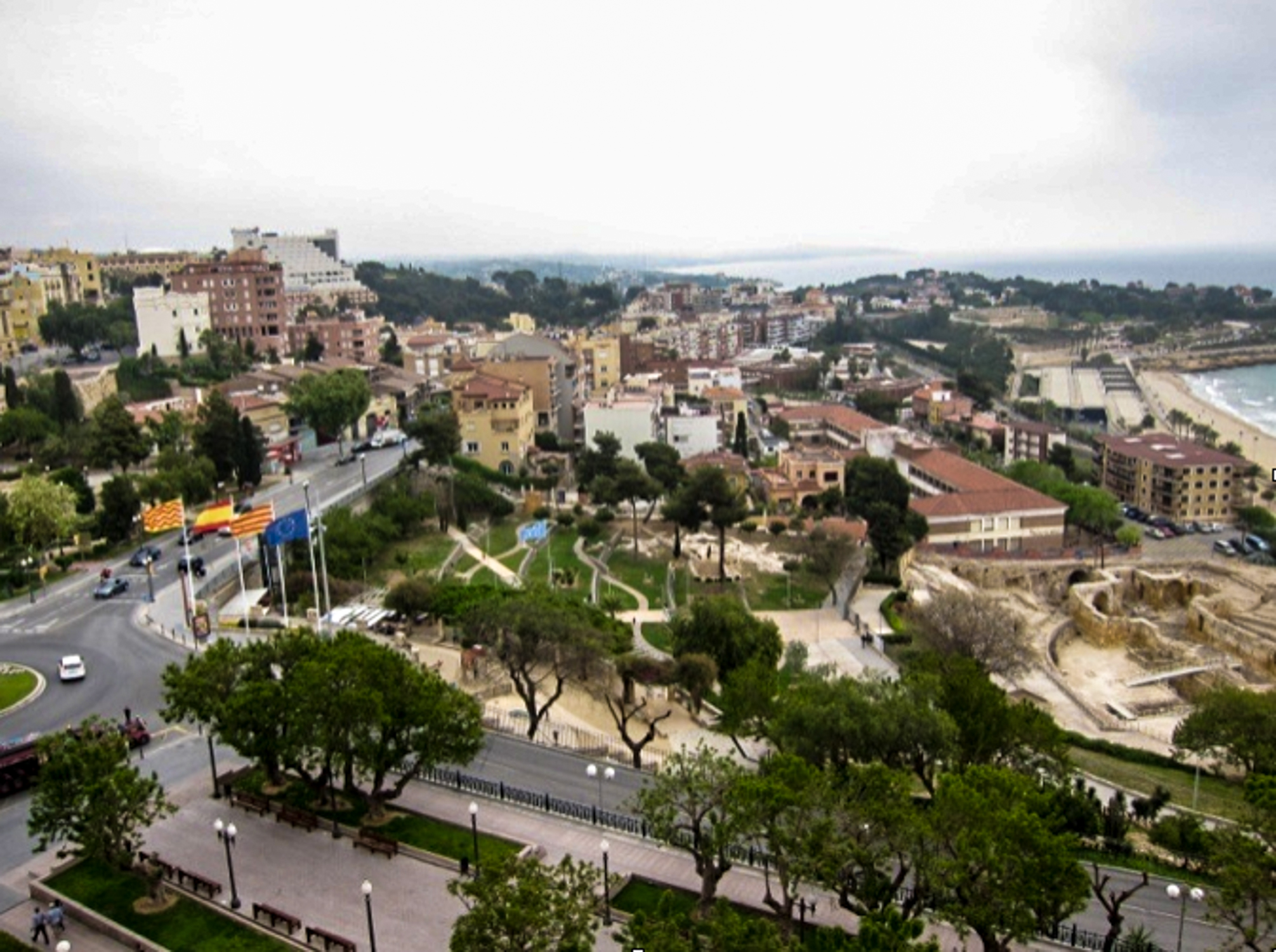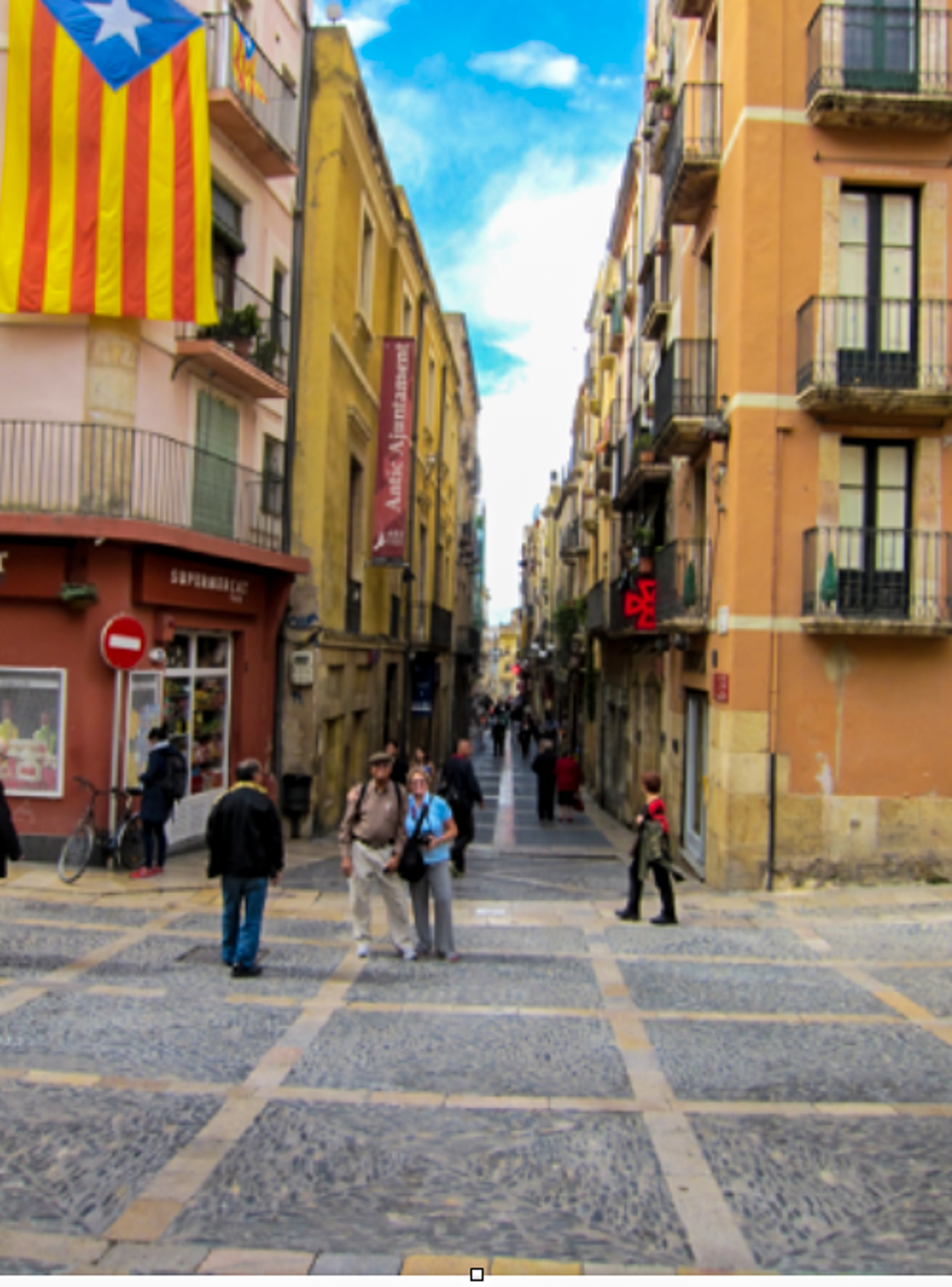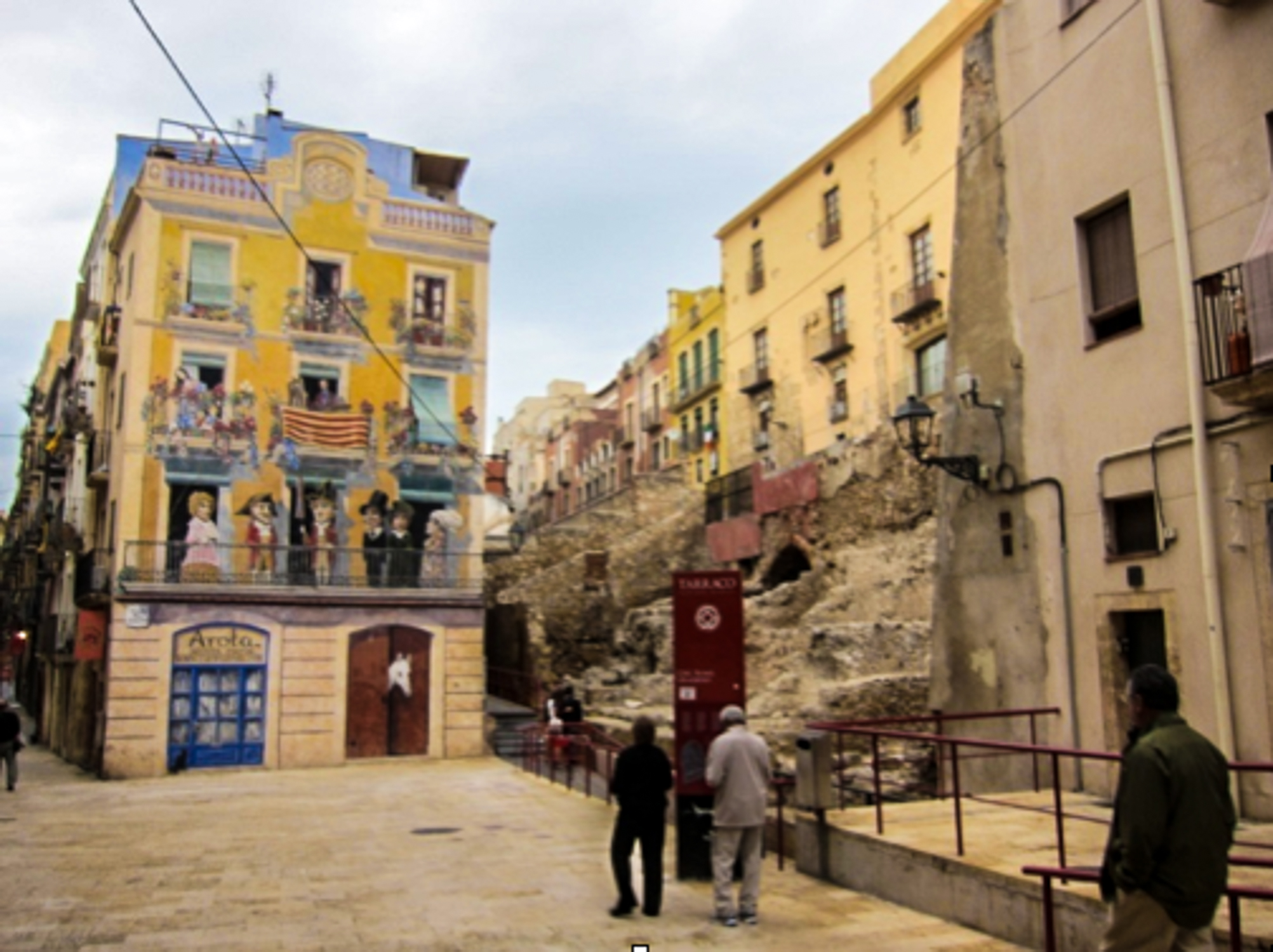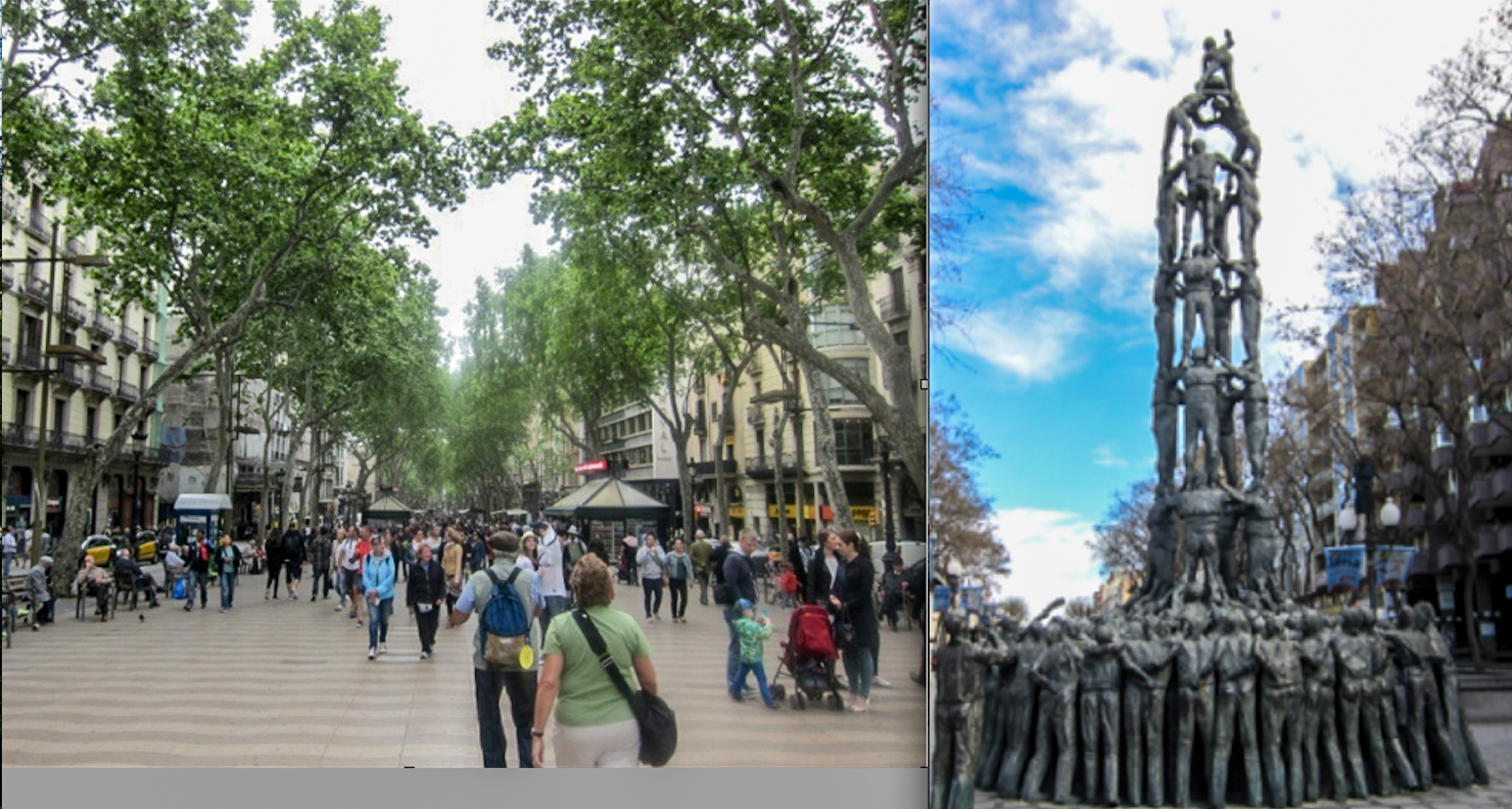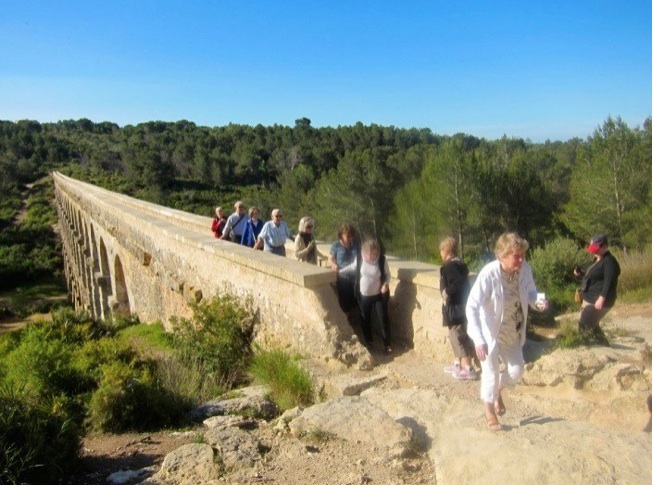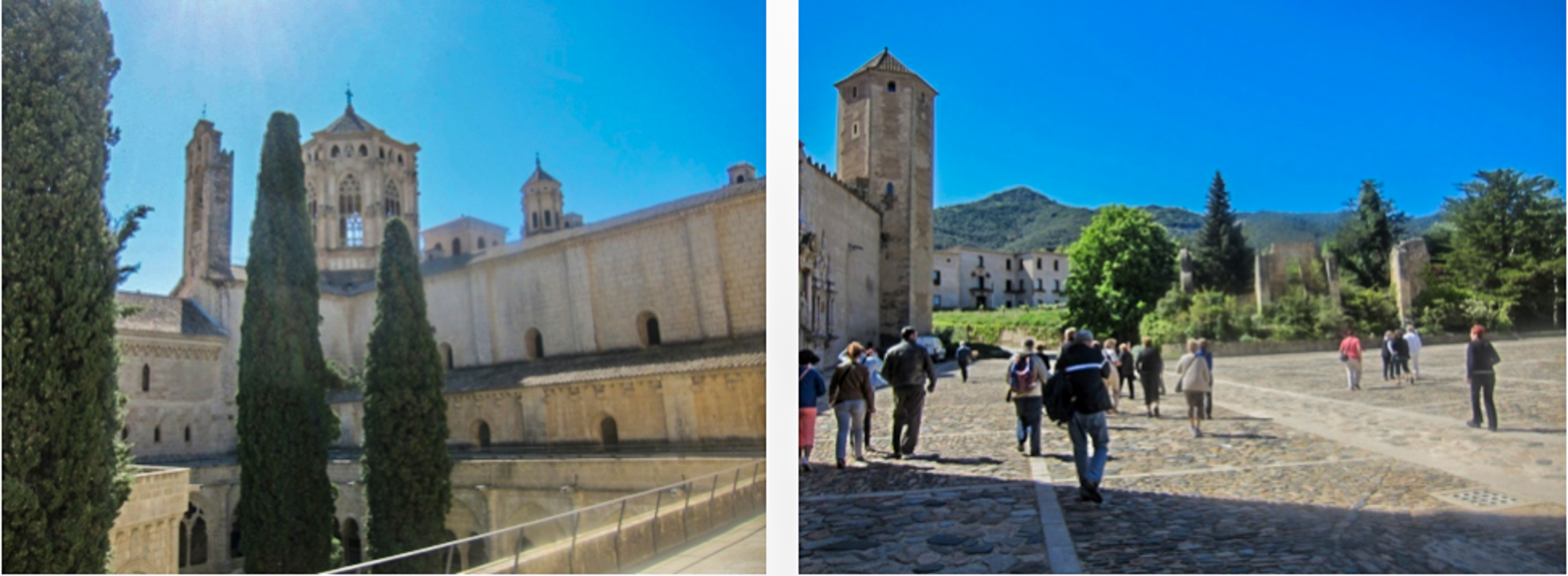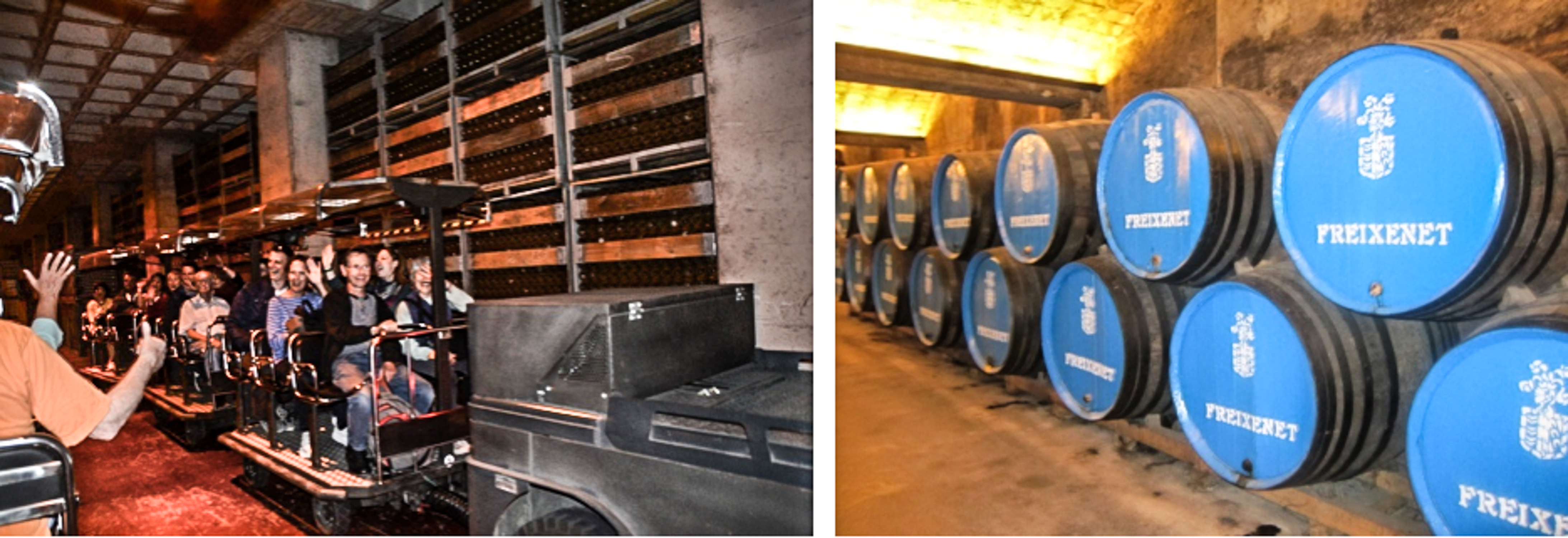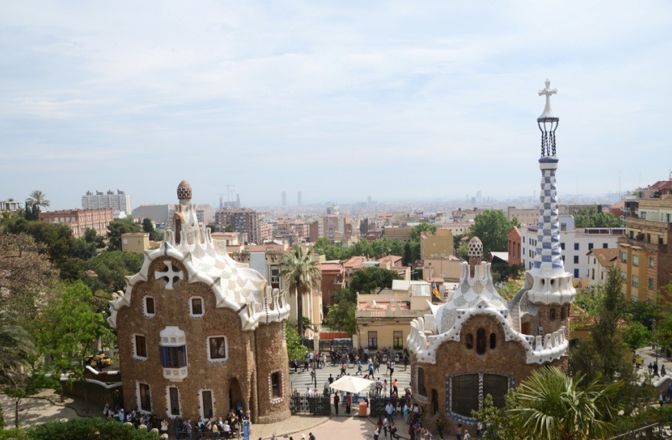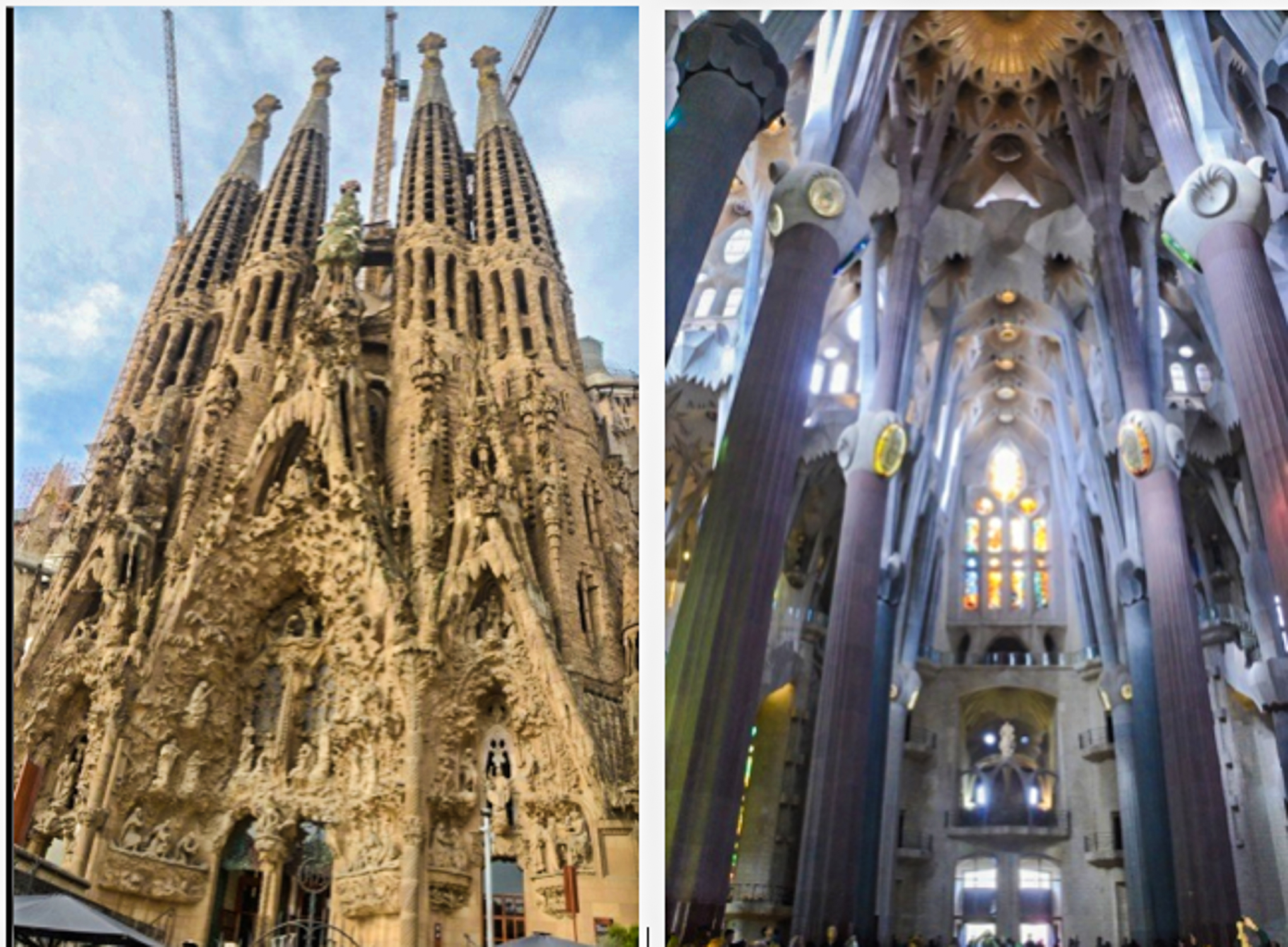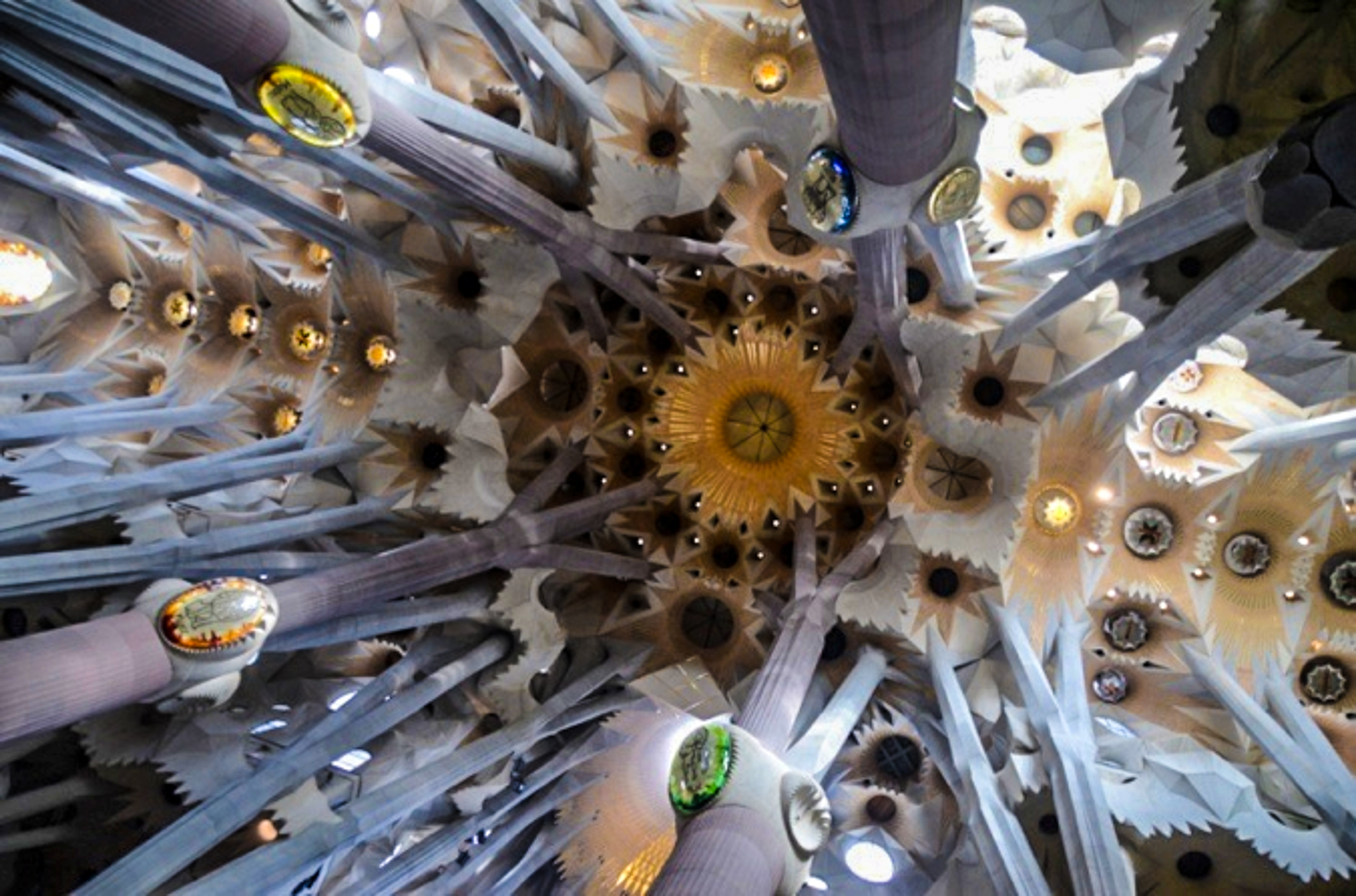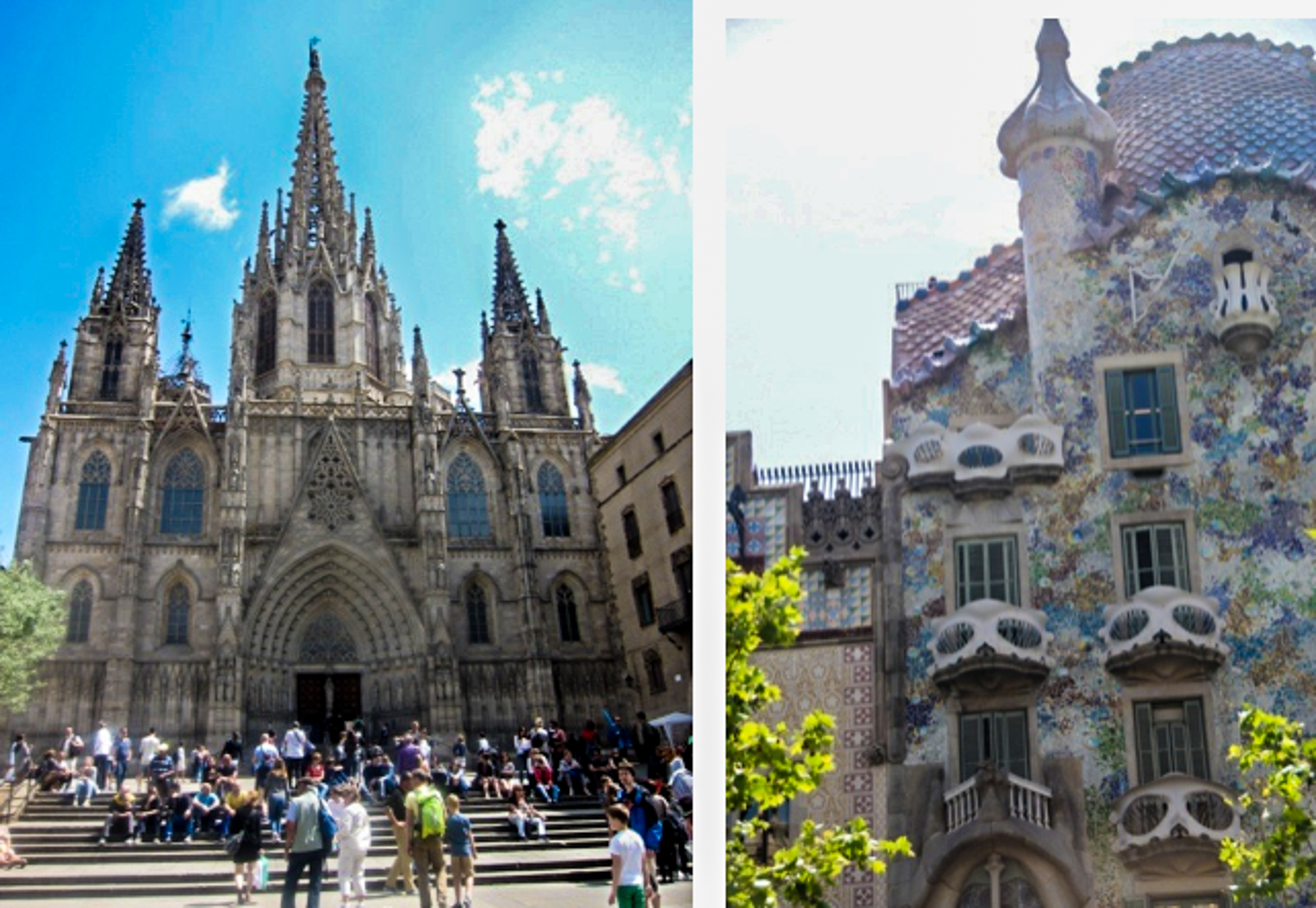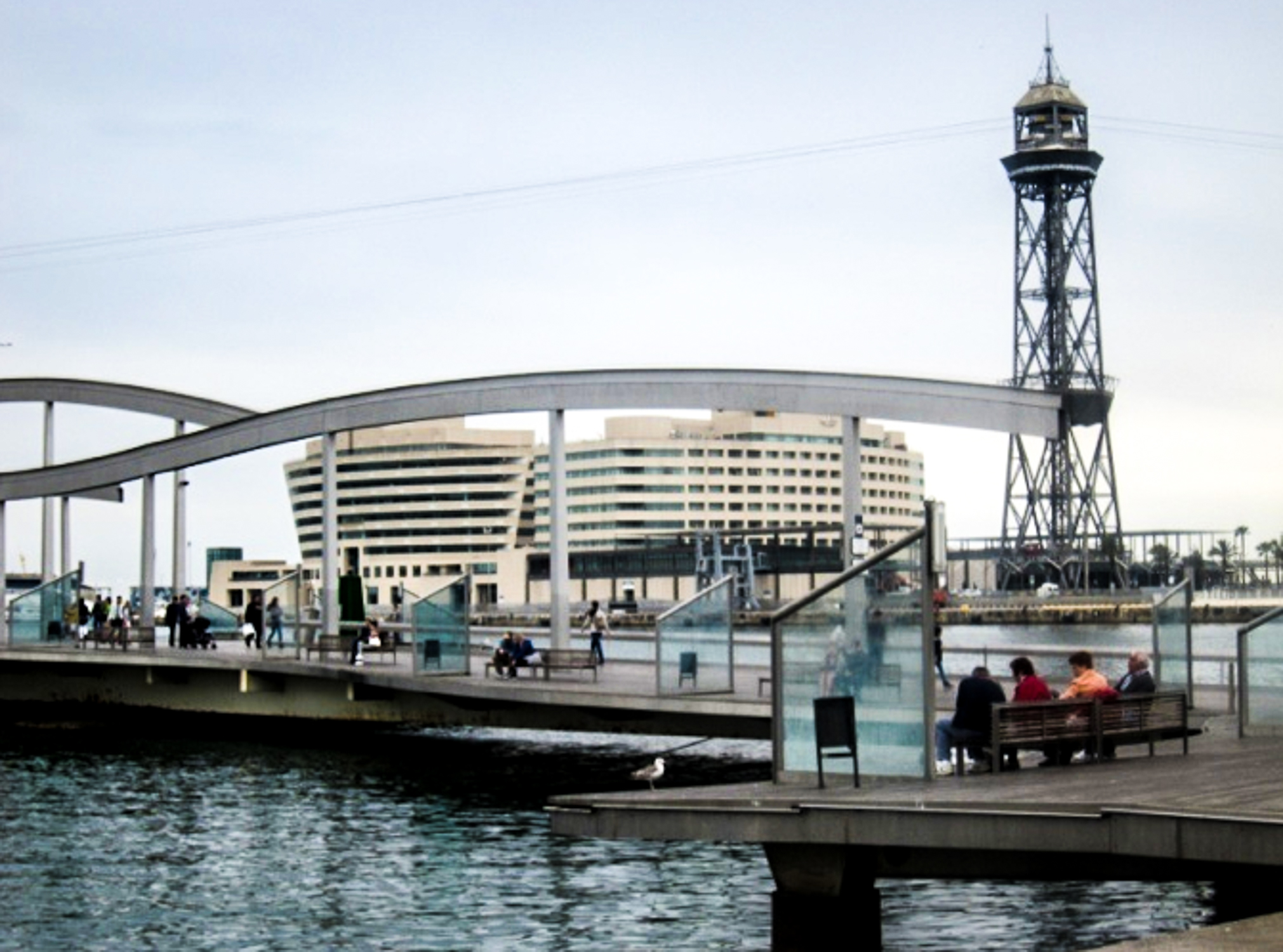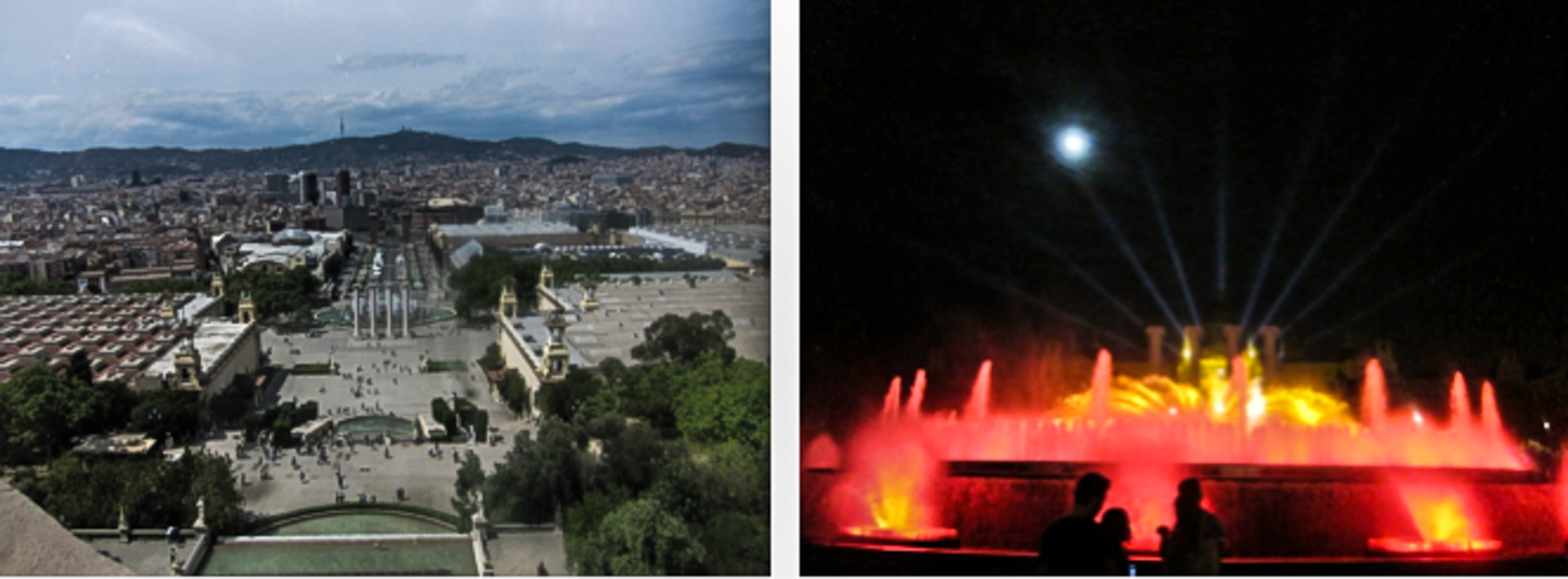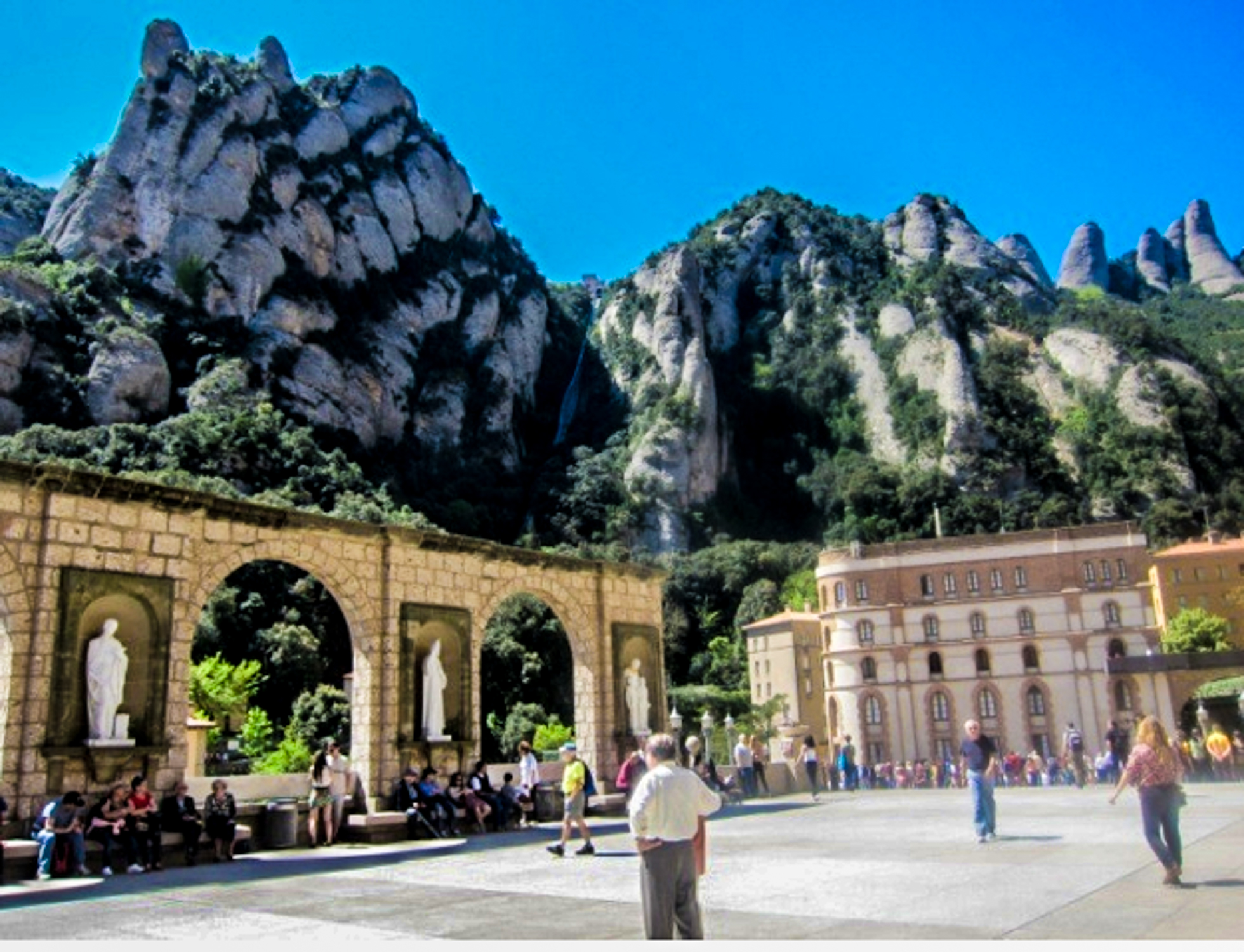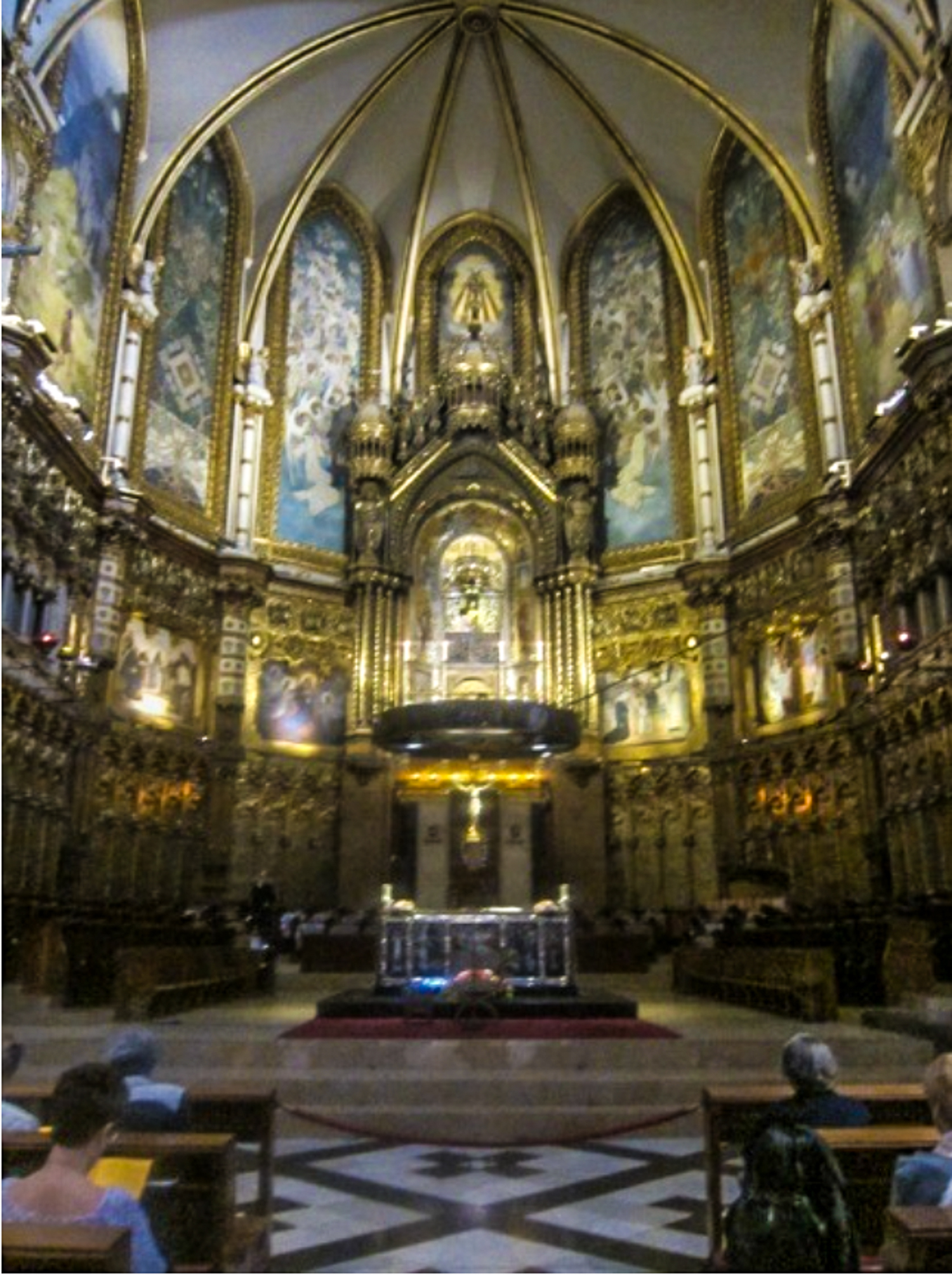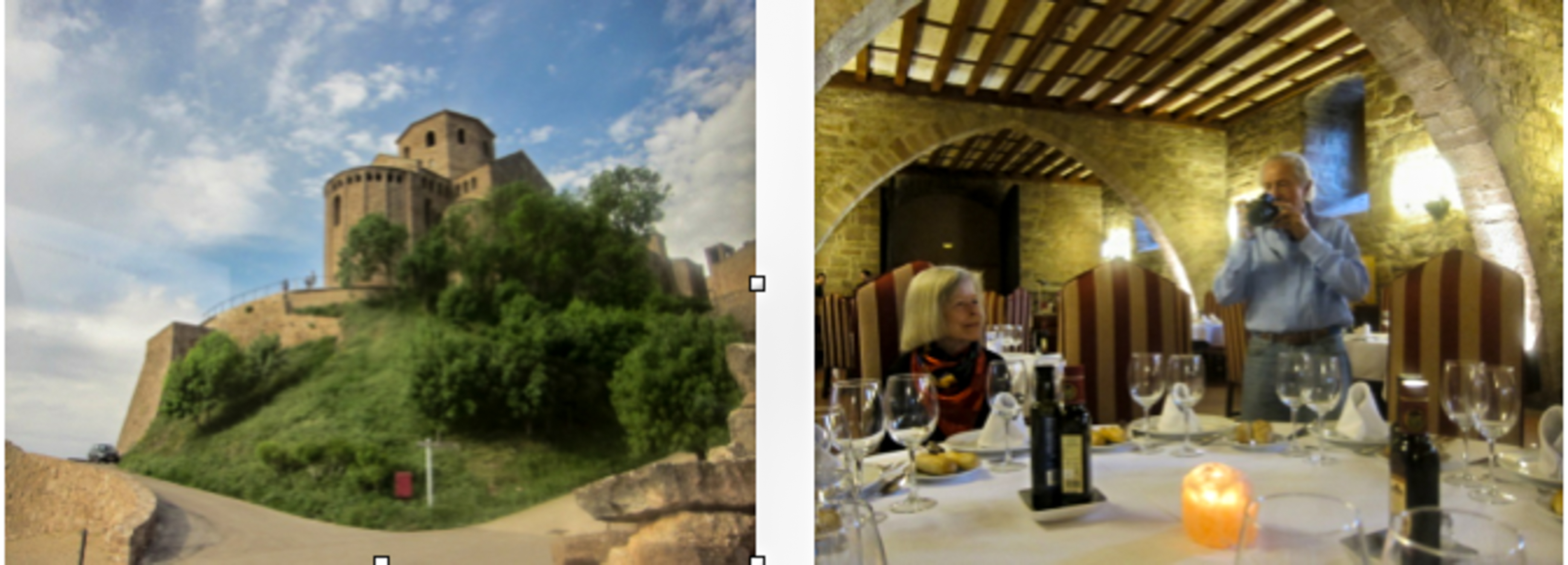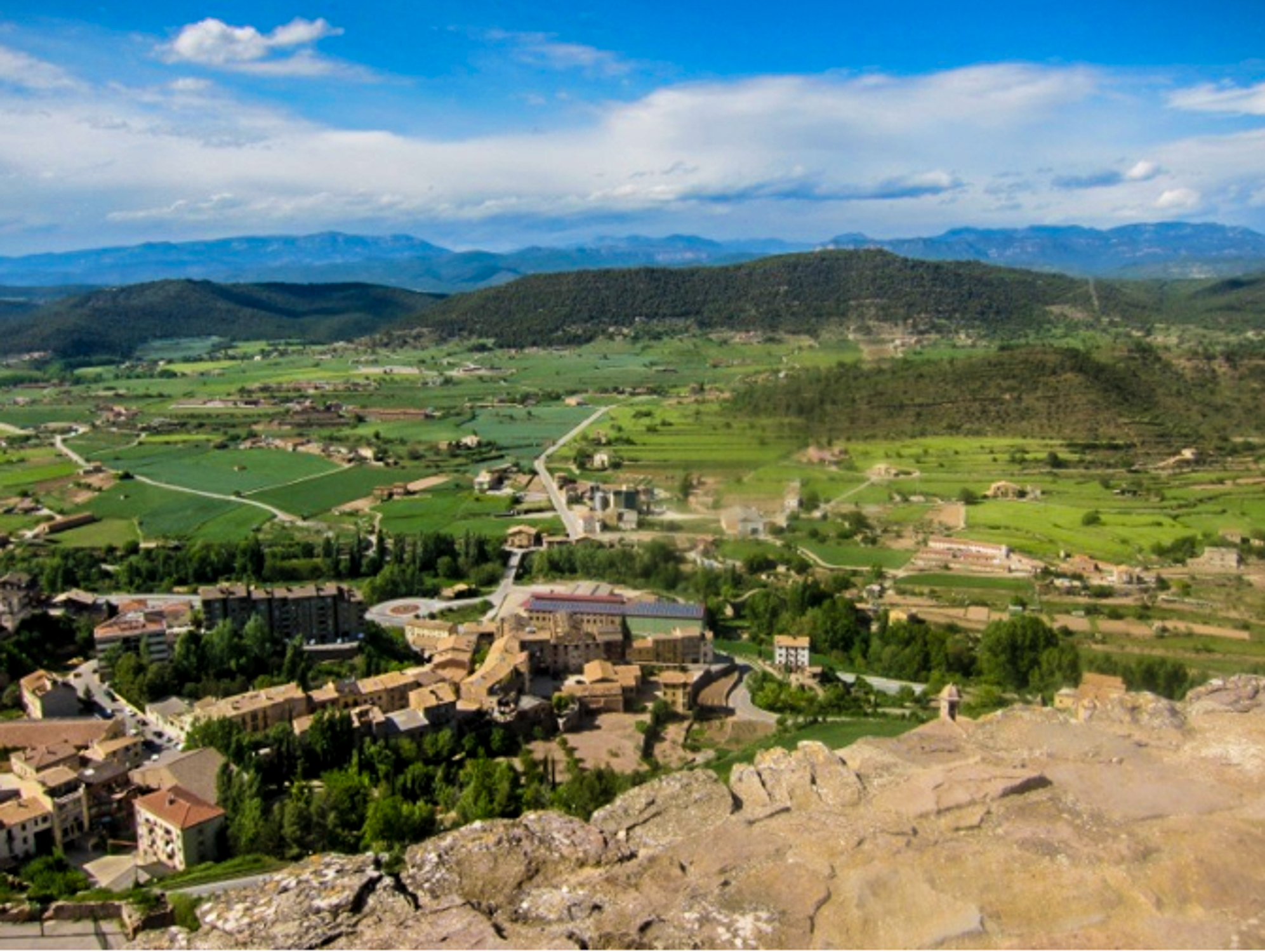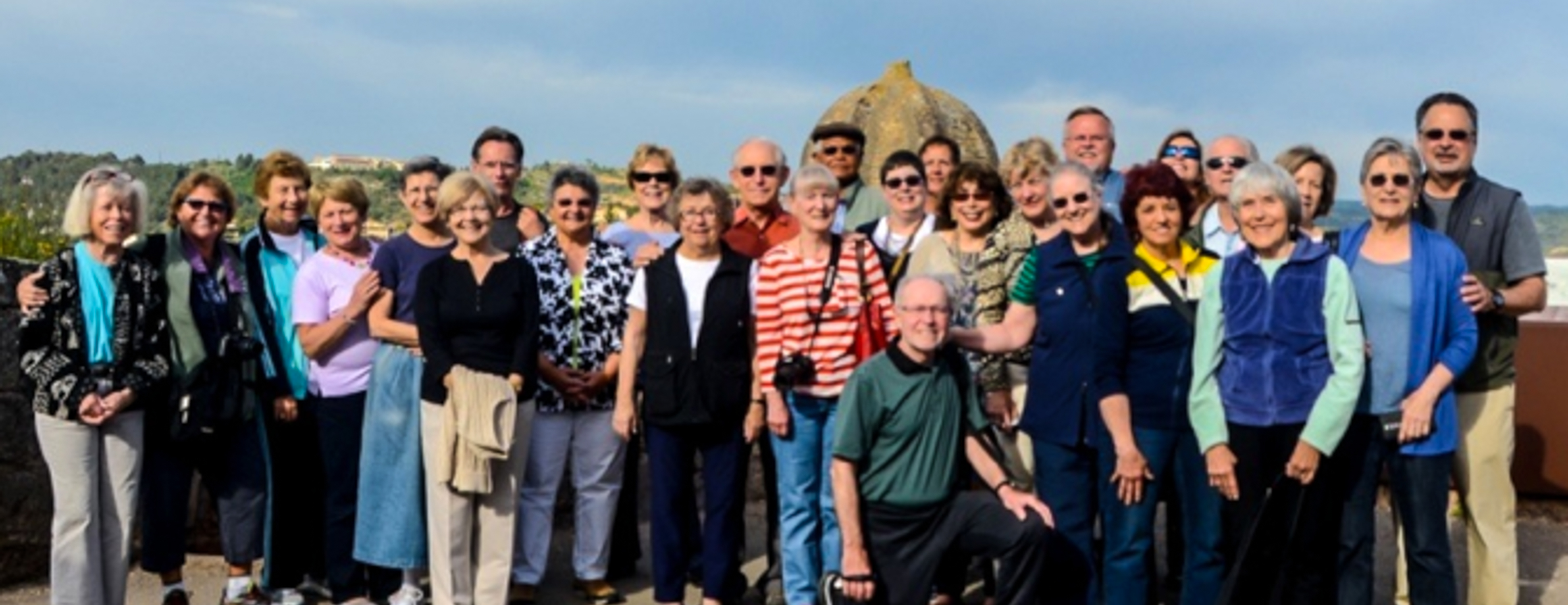Text and pictures by Jennifer and John Brindisi
This was the fourth trip to Spain that Mariano Merino has orchestrated with Ben and Louise Taggie of MSA Tours, and there were 28 of us on the 10-day trip, 20 of whom were from The Second Half. All the excursions have been wonderful explorations of the unique picturesque cities on the Iberian peninsula. This visit to Barcelona and its surrounding sites was different in that it enabled us to experience the Catalan culture.
We began our Catalan experience in the old Roman port of Tarragona with a view from our hotel of the ancient Roman walls, amphitheater, and the Mediterranean Sea. We wandered the narrow streets of the old city, as well as the broad pedestrian Rambla Nova with its Monument als Castellers, the sculpture of a human tower traditional to Catalonia.
Spain is steeped in religious and cultural history, as well as being known for its wine and sherry. On our way to Barcelona we visited the Roman Aqueduct de les Ferreres, Devil’s Bridge. Only 217 m. remain of the original 25 kms.
We also visited the beautiful Poblet Monastery and winery built by Cistercian monks in 1150, then continued on for a tour and tasting at the Freixenet Cava winery that makes wonderful bubbly Spanish wine.
The city of Barcelona rivals Paris for weste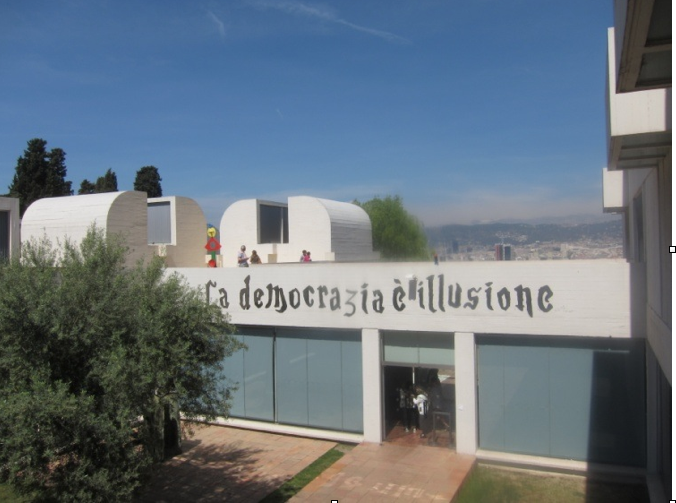 rn art and culture. It was home to Jean Miro, Pablo Picasso, Antoni Gaudi and Pablo Casal for some or all of their creative lives, and they have left an indelible influence on the city. The Picasso Museums had a wonderful exhibit chronicling Picasso’s and Dali’s progression from Impressionism to today’s Modern Art.
rn art and culture. It was home to Jean Miro, Pablo Picasso, Antoni Gaudi and Pablo Casal for some or all of their creative lives, and they have left an indelible influence on the city. The Picasso Museums had a wonderful exhibit chronicling Picasso’s and Dali’s progression from Impressionism to today’s Modern Art.
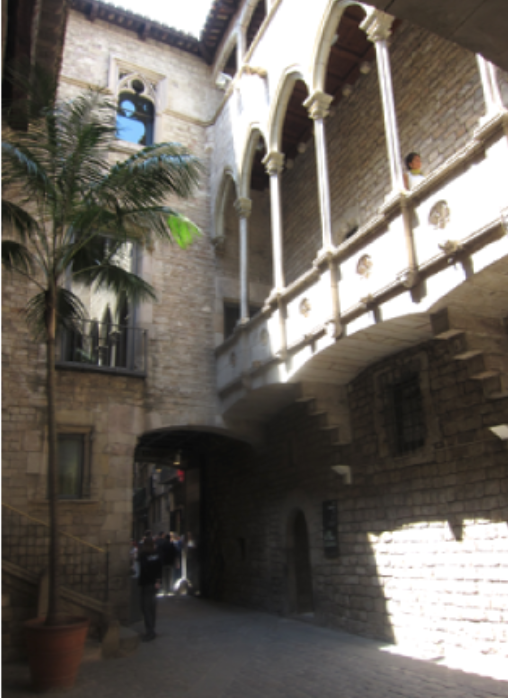 Gaudi’s Parc Guel and his still unfinished masterpiece, Basilica de la Sagrada Familia, are monuments to nature’s influence in his architectural design.
Gaudi’s Parc Guel and his still unfinished masterpiece, Basilica de la Sagrada Familia, are monuments to nature’s influence in his architectural design.
We experienced the sights and sounds of Catalan culture at a fusion of Opera & Flamenco music in the Palau de la Musica Catalana. It is an exquisite ‘Modernista’ style theater designed by the architect Lluís Domènechi Montaner, built in the early 1900’s, that surrounded the evening with a feast of sight and sound.
Wandering through the old city along La Rombla’s, a pedestrian green way, it was easy to absorb the Catalan experience: The Boquera Market bustled with people buying all sorts of meat, fish, fruit, and vegetables.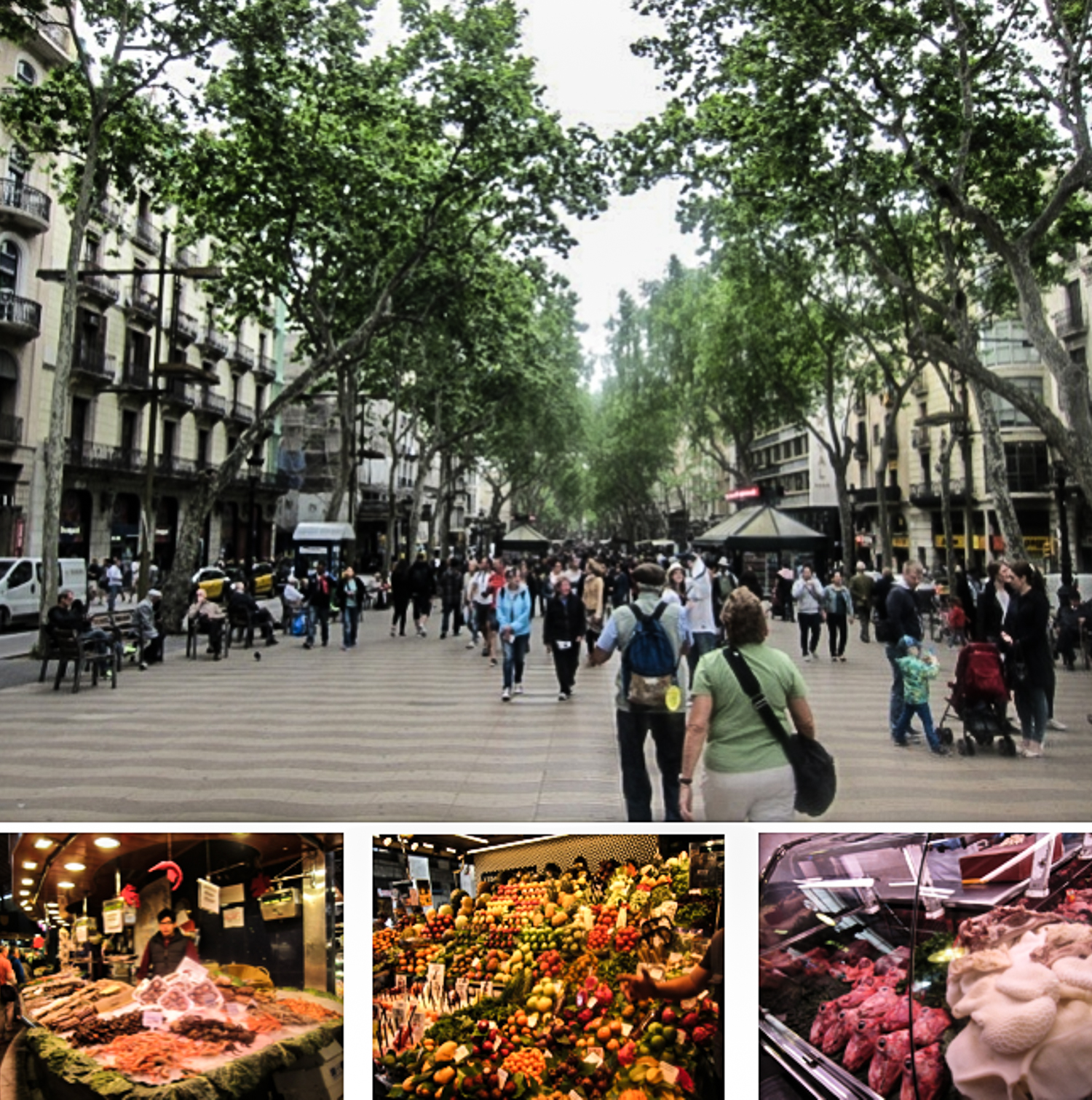
The beautiful Gothic architecture of the old Cathedral contrasted with Gaudi’s 1900’s apartments. The parks bustled with locals out for a stroll from morning until midnight.
The Gothic Quarter extended to the old harbor that was renovated for the 1992 Olympics. From the harbor it is a short ride with the aerial tram to Montjuic where the National Art Museum of Catalonia sits high above the city.
By day the view of the city was wonderful, but by night the Magic Fountains were illuminated and their water dance was choreographed to music.
The final day of our journey took us to the Monastery at Monserrat, Catalonia’s most important religious retreat. The Statue of the Virgin of Monserrat, the black virgin, sits high above the altar and is Catalonia’s favorite saint.
We spent our final night in a Parador in Cardona. Built in 986 A.D. as a castle, it has seen many battles in the past and is reputed to have been attacked by Charlemagne, William the Hairy, and Almursur the Moor. It was built high above the surrounding plains where salt has been mined since before the castle was built.
After cocktails on the terrace with its spectacular view of the valley and the distant mountains, our group had a traditional dinner in its uniquely decorated medieval restaurant.
After 10 wonderful days of the Catalonia experience, we boarded our flight home eager to share our pictures and discoveries with family and friends. Unfortunately, we missed our connecting flight in Paris and had to spend the night in a Charles de Gaulle Airport Hotel giving us extra time to assimilate our Catalonian experiences.
